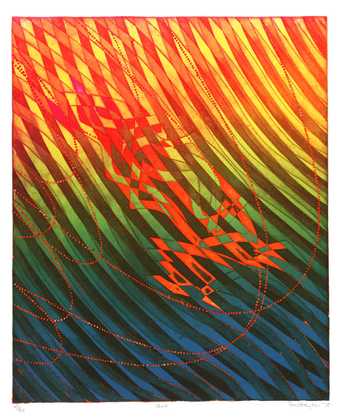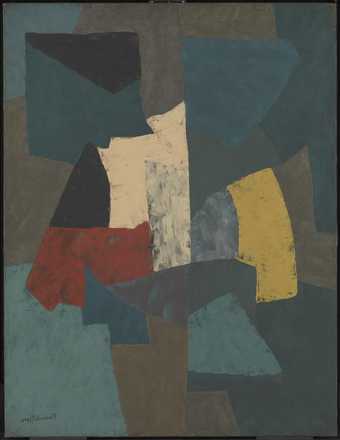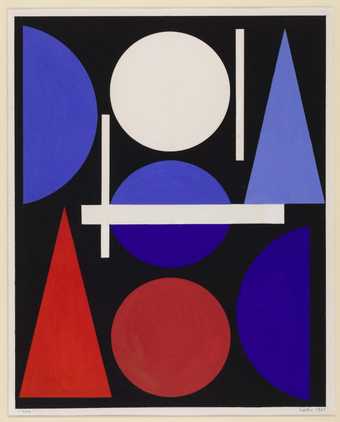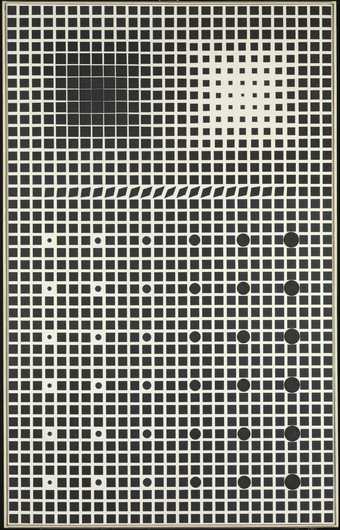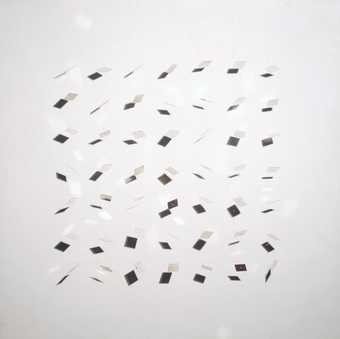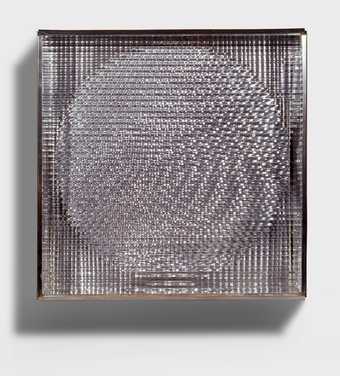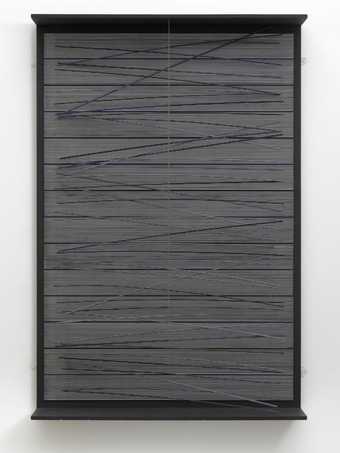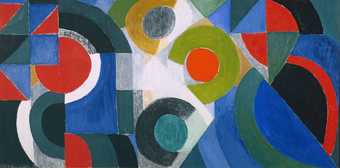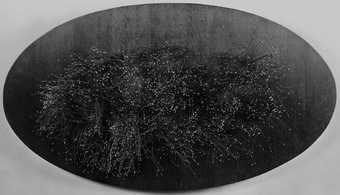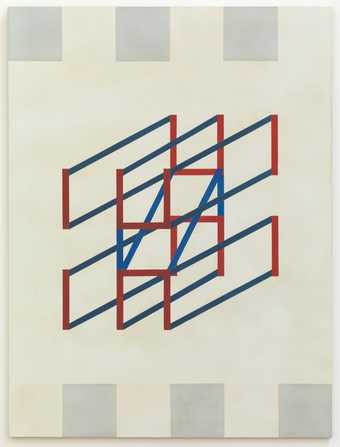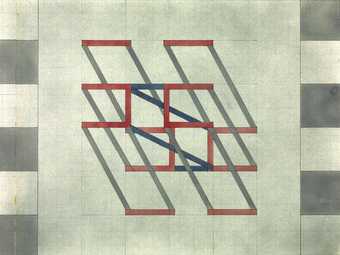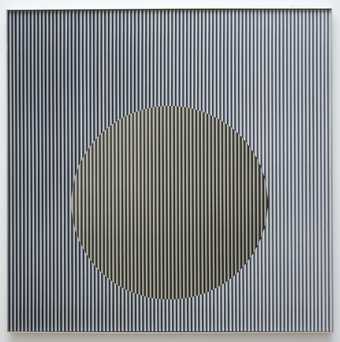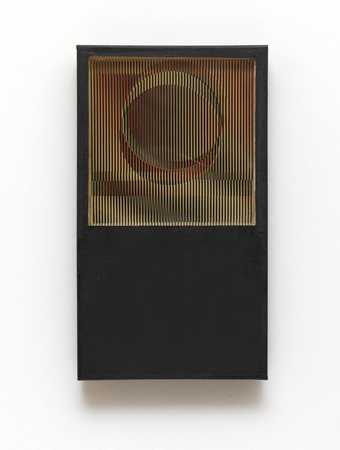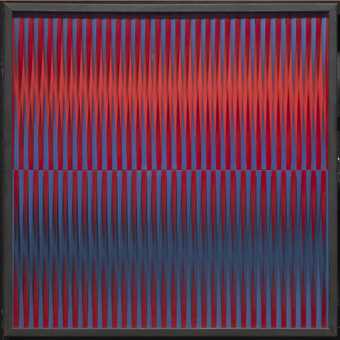
Not on display
- Artist
- Pol Bury 1922–2005
- Original title
- 16 Boules, 16 cubes sur 8 rangées
- Medium
- Wood, nylon and motor
- Dimensions
- Object: 800 × 400 × 290 mm
- Collection
- Tate
- Acquisition
- Purchased 1967
- Reference
- T00919
Catalogue entry
Pol Bury born 1922
T00919 16 Boules, 16 Cubes sur 8 Rangées
(16 Balls, 16 Cubes in 8 Rows) 1966
Inscribed on back top edge '16 BOULES, 16 CUBES SUR 7 RANGÉES. Pol Bury Sept 66.'
Motorised construction of stained wood and plywood, 31 1/2 x 15 3/4 x 7 7/8 (80 x 40 x 20)
Purchased from the artist through Kasmin Ltd. (Grant-in-Aid) 1967
Exh:
Pol Bury: Cinétisations, Galerie La Hune, Paris, October 1966 (no catalogue); Pol Bury, Kasmin Ltd., London, April-May 1967 (works not listed, repr.)
Lit:
Pol Bury, La Boule et le Cube
(Brussels 1967); Michael Compton, Optical and Kinetic Art
(London 1967), n.p., repr. pl.32
Repr:
Studio International, CLXXIII, 1967, p.269; Arts Review, XIX, 22 July 1967, p.266
The balls and cubes are arranged in eight rows which comprise all the six permutations of the two balls with two cubes, and two of the eight permutations of three of one kind with one of another. This logical regularity contrasts with the randomness and the jerky, wayward slowness of their movements. The title inscribed on the back gives the number of rows as seven, but the artist says that this must have been a mistake and can be corrected.
Bury, who first began to work with wooden balls and cubes in 1963, wrote a sort of essay or prose poem in January 1966 entitled 'The Ball and the Cube', from which the following is an extract:
'Placed in each other's presence, the cube and the ball are the white and the black, for whom one is blacker, the other whiter. The contraries which attract each other, the dissimilarities which complement each other.
'But the posterior can raise itself, the apple can roll if pushed by a facetious finger, and each event involves the intervention of the obscure forces of Weightiness, indisputable Gravity.
'Let us connect one to the other by a thread, thus thwarting this Gravity and giving it an air of lightness, of levity (but only an air).
'The ball caresses ... The caressed cube takes on a certain roundness (at any moment now, it might start purring) ... The ball, statelier than in the palm of the hand, enjoys the savour of the flat surfaces ...'
(Translation by Simon Watson Taylor published in Dore Ashton, Pol Bury, Paris 1970, p.113).
Published in:
Ronald Alley, Catalogue of the Tate Gallery's Collection of Modern Art other than Works by British Artists, Tate Gallery and Sotheby Parke-Bernet, London 1981, pp.88-9, reproduced p.88
Explore
- abstraction(8,615)
-
- non-representational(6,161)
- formal qualities(12,454)
-
- movement(172)
You might like
-
Stanley William Hayter Chute
1975 -
Serge Poliakoff Abstract Composition
1954 -
Auguste Herbin Nude
1960 -
Victor Vasarely Supernovae
1959–61 -
Julio Le Parc Continual Mobile, Continual Light
1963 -
Heinz Mack Light Dynamo
1963 -
Jesus Rafael Soto Cardinal
1965 -
Sonia Delaunay Triptych
1963 -
Pol Bury 3069 White Dots on an Oval Background
1966 -
Gerhard von Graevenitz 5 Black Rectangles on White
1973 -
Gillian Wise Looped Network Suspended in Pictorial Space
1974 -
Gillian Wise Study for ‘Looped Network Suspended in Pictorial Space’
1974 -
Carlos Cruz-Diez Physichromie No. 113
1963, reconstructed 1976 -
Carlos Cruz-Diez Physichromie No. 123
1964 -
Walter Leblanc Mobilo Static
1960

